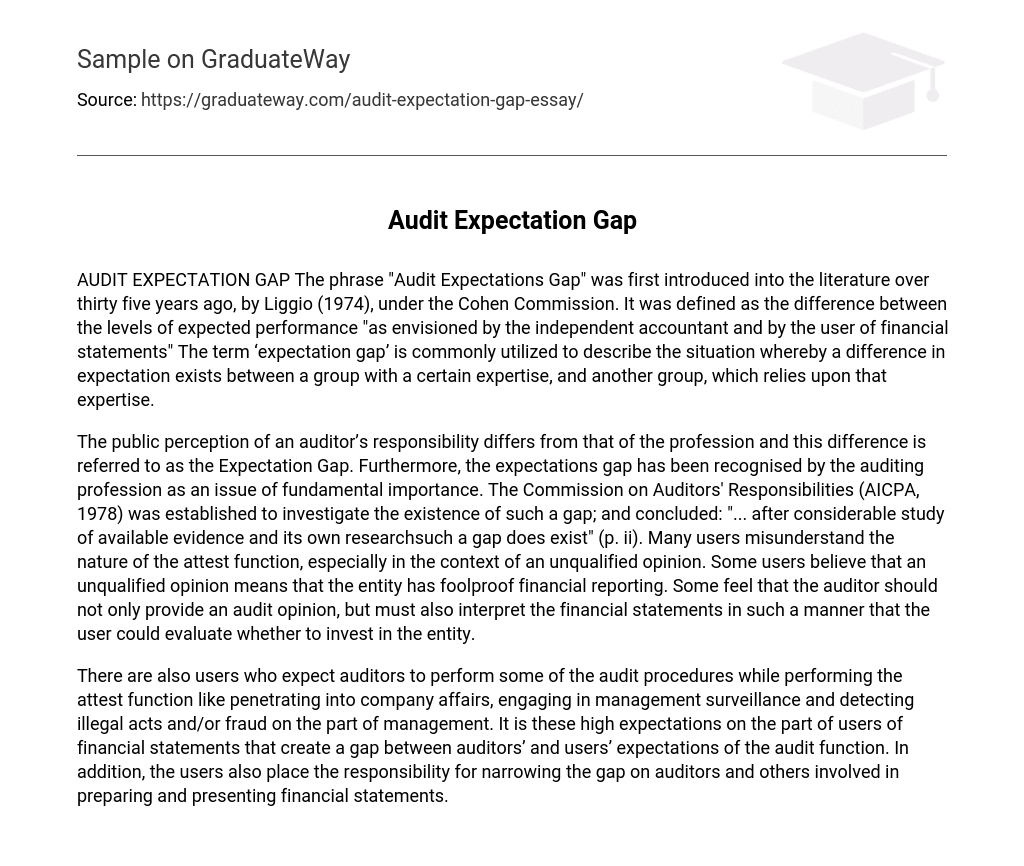The “Audit Expectations Gap” was introduced by Liggio (1974) in the Cohen Commission, which pertains to the contrast in anticipated performance between an independent accountant and a user of financial statements. The term “expectation gap” is commonly utilized to depict a scenario where there is a variance in expectations between a group with expertise and another group that depends on said expertise.
The auditing profession recognizes the significant issue of the Expectation Gap, which refers to the difference between the public perception and the profession’s perception of an auditor’s responsibility. This gap was identified by the Commission on Auditors’ Responsibilities in 1978 after conducting extensive research. One aspect that is often misunderstood by users of financial statements is the attest function, particularly when it comes to an unqualified opinion. There is a misconception among some users that an unqualified opinion ensures flawless financial reporting by the entity. Furthermore, some users believe that auditors should not only provide an audit opinion but also interpret the financial statements to assist users in making investment decisions for the entity.
Users of financial statements expect auditors to perform audit procedures while also conducting attest functions such as delving into company affairs, monitoring management, and uncovering any illegal acts or fraud committed by management. These lofty expectations from users result in a gap between the audit function as perceived by auditors and users. Furthermore, users also hold auditors and others who prepare and present financial statements responsible for bridging this gap.





